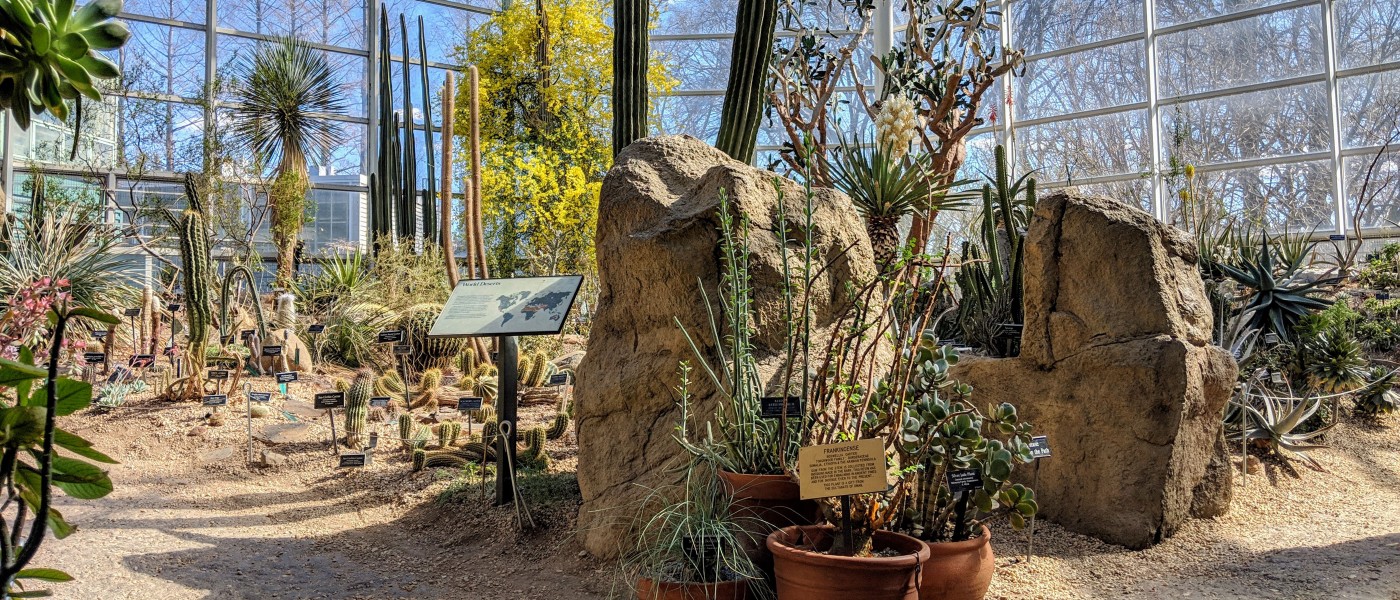Plants, Sunlight, and Buildings
Most people know that plants rely on sunlight for photosynthesis, but there is more to the story. Plants have evolved in an incredibly complex world and most are very sensitive to particular and sometimes very subtle cues in their environment.
Brooklyn Botanic Garden recently spoke with Beronda Montgomery, a plant biologist at Michigan State University who studies photosynthesis and the relationship between plants and their environment. She explained the difference between shade and shadows, the importance of the full spectrum of sunlight, and the wisdom of considering how new buildings will affect the natural world.
What is it about sunlight (as opposed to artificial light) that plants respond to?
Plants have evolved to detect natural light, and they detect many aspects of it—the full spectrum of colors it contains and light intensity. That means that they react to a certain amount of red light and a certain amount of blue, but really all of the colors in between, too. Artificial light, which can be used to supplement sunlight, is usually tuned to pull out just red and sometimes blue. You can certainly use it to keep plants growing, but they don’t have the full set of dynamic cues representative of full sunlight.
Would shade-loving plants thrive in a shadow created by a building?
Tall buildings just shade out the light completely. That’s different from the natural shade created by taller plants that shade-loving plants have evolved to grow in. With natural shade, you get periods of dappled light. Also, when a shorter plant is shaded by a taller plant, the taller plant absorbs more of the red light; the shorter plant detects this and responds accordingly. Some may do things like branching out or bending, or they may adapt to receiving less of the red light in the spectrum.
But when you’re talking about building shadows, that’s a very different situation for plants. All the colors of the spectrum are there, but all of a sudden, there’s less of it. Plants will react. The cues that caused species to develop certain characteristics via millions of years of evolution have changed almost overnight.
And when light is cut off by buildings, all plants notice—the shade-loving understory plants, the tall plants, all of the neighboring plants.
What about indoor plants that rely on a lot of sunlight, like those grown in conservatories or greenhouses?
Certainly you would see similar effects, particularly on sun-loving plants. And glass houses are also designed not only with particular light conditions in mind, but with different temperatures, different humidity, all very delicately balanced. Changes to multiple cues at once, multiple stressors at once, would be difficult to adjust to.
How else do surrounding buildings affect plants and gardens?
Buildings are also very likely to change the intensity of light exposure, and the plants will have to change to adapt to that. They also create unnatural conditions in other ways, depending on the materials they’re made of. Glass, for instance, reflects light off the building and produces a glare. Concrete and other building materials can absorb and radiate heat and affect the surrounding temperature and sometimes the air flow and humidity.
Some plants will be very stressed by these sorts of changes.
What would that look like for the plants?
It’s hard to predict all the consequences, but sunlight triggers the full lifecycle of a plant, from producing leaves, sustaining leaves, flowering, fruiting. So any of those stages could be affected.
It depends a lot on the types of plants, but a typical response to reduced light would be more spindly plants, because they are responding by trying to search out more light with excess stem growth. Or there might be fewer leaves and less-green leaves. Sometimes you’ll see yellowing, because the ability to make chlorophyll has been reduced. Flowering would also be affected, so it would not be uncommon to see less flowering, as well as delayed flowering, depending on the plant species.
Undoubtedly you will see some plants that will no longer thrive at all, others that will adapt, but be less productive or otherwise react differently. For all of these changes to occur together, all at once, would be a major shift for a garden.
What might we learn from this?
These are good opportunities to remind ourselves that the decisions about where we put buildings and how we build them has a much larger impact than we often think about. We should remember the importance of the plants that surround us and adjust the built environment more thoughtfully.
Learn more about Brooklyn Botanic Garden’s Fight for Sunlight campaign to protect its plant collection from shadows that would be cast by proposed 34-story buildings nearby.


